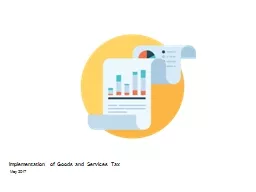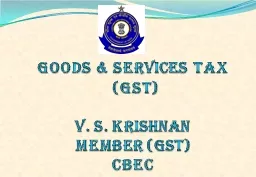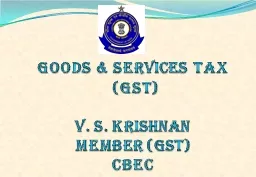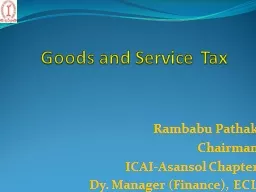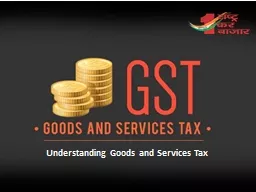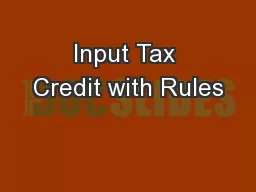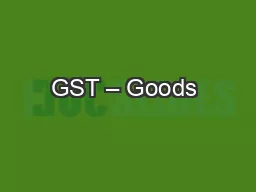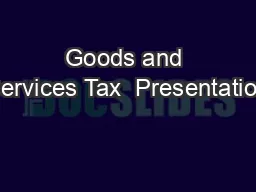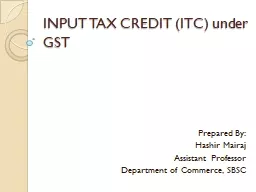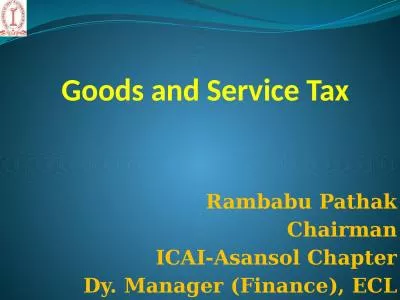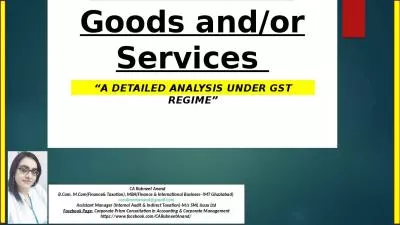PPT-Implementation of Goods and Services Tax
Author : danika-pritchard | Published Date : 2017-09-24
May 2017 GST where are we now Release of model GST law Nov 2016 Formation of GST Council and recommendation on GST law by GST Council Oct 2016 Final law to be
Presentation Embed Code
Download Presentation
Download Presentation The PPT/PDF document "Implementation of Goods and Services Tax" is the property of its rightful owner. Permission is granted to download and print the materials on this website for personal, non-commercial use only, and to display it on your personal computer provided you do not modify the materials and that you retain all copyright notices contained in the materials. By downloading content from our website, you accept the terms of this agreement.
Implementation of Goods and Services Tax: Transcript
Download Rules Of Document
"Implementation of Goods and Services Tax"The content belongs to its owner. You may download and print it for personal use, without modification, and keep all copyright notices. By downloading, you agree to these terms.
Related Documents

